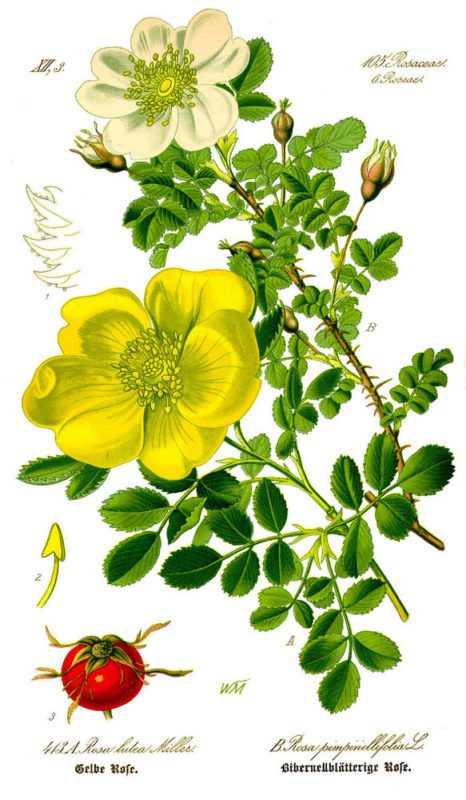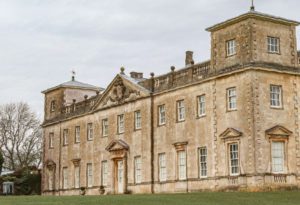Lydiard’s Austrian Rose
Lady Johanna St John, wife of Sir Walter and one of the 17th century chatelaines of Lydiard Park, was famous for her “recipe book” with its combination of herbals, medicines and what we might consider to be recipes in a more modern sense. She was a keen gardener and letters written from her home in Battersea to Thomas Hardyman, her steward at Lydiard, indicate how involved she was with the planting and development of the garden there. One letter contains instructions on where to plant the “Austrian Rose” that she has sent to him. But what was an Austrian Rose?
“hardyman
I bid richard brown send down some slips of the austrian rose if he hath sent them set them betwen the lawrel tre in the court if ther be any that stand far enough asunder…”
 In the 17th century there were considerably fewer varieties of rose than we have today. The ancestors of today’s flowers, they were cultivated for their delicate beauty and, in some cases, delicious perfume. However, one such old rose was the “Rose Foetida” so called because it had a smell that some people considered fetid or unpleasant. This scent, supposedly like boiled linseed oil, was bitter and burnt. However, it was a rose that was highly prized for its yellow flowers, because there were no yellow roses native to Europe, and the efficacy of its rose water.
In the 17th century there were considerably fewer varieties of rose than we have today. The ancestors of today’s flowers, they were cultivated for their delicate beauty and, in some cases, delicious perfume. However, one such old rose was the “Rose Foetida” so called because it had a smell that some people considered fetid or unpleasant. This scent, supposedly like boiled linseed oil, was bitter and burnt. However, it was a rose that was highly prized for its yellow flowers, because there were no yellow roses native to Europe, and the efficacy of its rose water.
The yellow Rose Foetida came by the name of “the Austrian Rose” in the 16th century. An import from Persia, it was successfully cultivated by Charles Clusius in the imperial gardens of Rudolf II, Emperor of Austria, in Vienna. It was quite a spindly sort of rose bush and required support to grow to its top height of about six foot tall.
Nowadays there are several varieties based on the original “Austrian Rose” including the Austrian Copper rose which blooms early in the season and has flowers with petals that are red or orange on the upper interior surface but yellow on the lower exterior surface. It would certainly have looked effective to plant the yellow roses beside the dark green of laurel in the courtyard at Lydiard.
Many of Lady Johanna’s recipes use rose water or rose oil, made by distilling or simmering rose petals in water. The Austrian Rose was known to provide an excellent quality of water and below is one of Lady Johanna’s ointments that it might have been used in. Despite the word “custard” in the title this was not a recipe to be eaten but to be spread on the skin!
Recipe for a Custard for Weakness in the back.
“The yolks of four new-laid eggs, the pith of an ox, almonds. Beat them thoroughly and strain them with a little new cream that is not above 8 hours old. Lay the pith in water to take out the blood and strip it from the skin. Put thereto nutmeg, rose water and sugar. Either make it into puddings or bake it with eggs poached in water where mint has been boiled. Also the milts of all fresh fish is good for the back if the patient be cold in his back.
